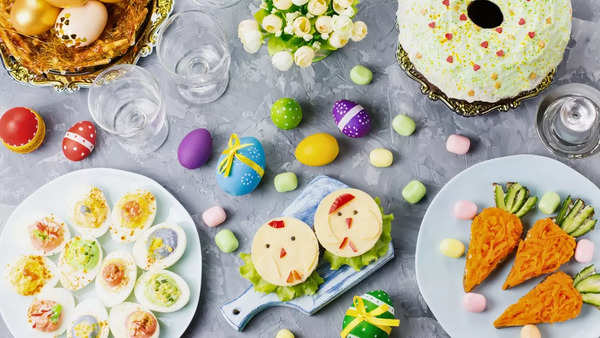Easter, celebrated worldwide by Christians, holds profound historical and cultural significance. It commemorates the resurrection of Jesus Christ, signifying hope, renewal, and the triumph of life over death. Alongside religious observances,
Easter
is also marked by indulgent feasts featuring a variety of traditional foods. Let's explore the fascinating history of Easter and delve into five iconic dishes prepared on this sacred day.
History and significance
Easter traces its roots to ancient pagan festivals celebrating the arrival of spring and the renewal of life.
Over time, these festivities merged with Christian traditions, with Easter symbolizing the resurrection of Jesus Christ following his crucifixion. The date of Easter varies each year, falling on the first Sunday following the full moon after the vernal equinox.
Hot Cross Buns
Hot cross buns are a quintessential Easter treat with a rich history dating back centuries. These spiced and sweetened buns are marked with a cross on top, symbolizing the crucifixion of Jesus. Traditionally enjoyed on Good Friday, hot cross buns are often made with ingredients like currants, raisins, and spices such as cinnamon and nutmeg.
Roast Lamb
Roast lamb has long been a centerpiece of Easter feasts, symbolizing the sacrificial lamb of God in Christian theology. This succulent and flavorful dish is typically seasoned with herbs like rosemary and garlic, then roasted to perfection. It serves as a reminder of Jesus' sacrifice and resurrection, as well as a symbol of springtime abundance.

Easter Eggs
Easter eggs are perhaps the most iconic symbol of the holiday, representing new life and rebirth. The tradition of decorating eggs dates back to ancient civilizations, including the Egyptians and Persians, who exchanged decorated eggs to celebrate the arrival of spring. Today, Easter eggs are often dyed, painted, or adorned with intricate designs, serving as festive decorations and delightful treats.
Simnel Cake
Simnel cake is a traditional Easter dessert with medieval origins. This rich fruitcake is studded with dried fruits such as currants, raisins, and candied peel, then topped with a layer of marzipan and decorated with eleven marzipan balls representing the apostles (excluding Judas). Simnel cake is enjoyed as a symbol of Easter's spiritual and culinary abundance.
ALSO READ: Traditional dishes enjoyed on Easter around the world
Paschal Lamb (Butter Lamb)
The Paschal Lamb, also known as the Butter Lamb, is a traditional Easter symbol in Eastern European and Slavic cultures. It is typically made by shaping butter into the form of a lamb, which symbolizes Jesus as the sacrificial Lamb of God. The Butter Lamb is often served alongside Easter bread or incorporated into festive dishes as a symbolic centerpiece.
Easter is a time of spiritual reflection, celebration, and culinary indulgence, marked by rich traditions and symbolic foods. From hot cross buns and roast lamb to Easter eggs and Simnel cake, these traditional dishes carry deep historical and religious significance, serving as reminders of the season's themes of renewal, hope, and resurrection. As we gather with loved ones to commemorate this sacred holiday, let us embrace the rich heritage and symbolism of Easter through our shared traditions and festive feasts.
(Images courtesy: Canva)












 English (US) ·
English (US) ·